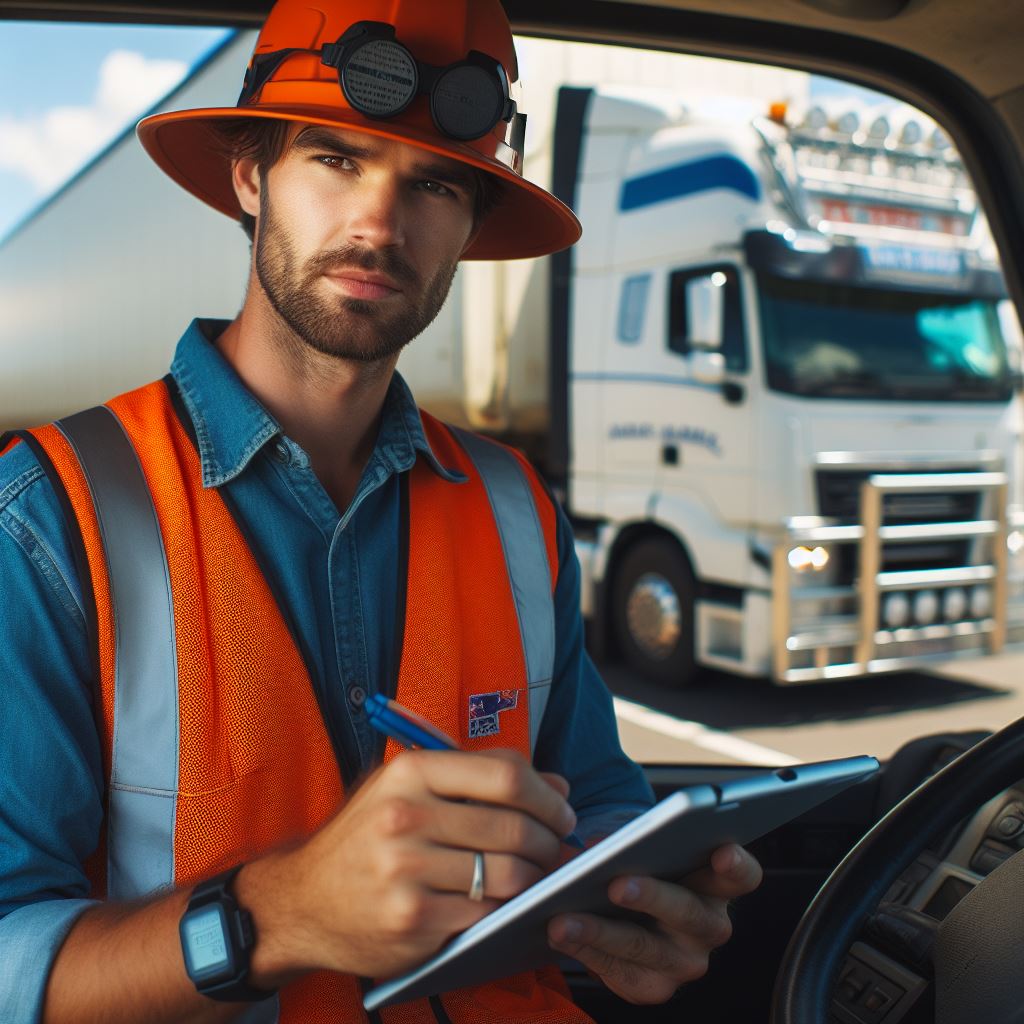Introduction
Welcome to our exploration of technology’s impact on train driving in Australia.
We’ll delve into how technology revolutionizes train operation.
Advancements in automation, communication, and safety systems reshape train driving.
State-of-the-art controls and signaling enhance efficiency and safety GPS navigation and real-time monitoring optimize route navigation.
Predictive maintenance reduces downtime and improves reliability.
Safety features like collision avoidance systems ensure passenger and crew safety Better communication and coordination enhance operational efficiency and emergency response.
Digitalization and IoT herald a technological revolution in train driving Challenges include adapting to new systems and automation concerns.
Join us as we uncover the opportunities and challenges of tech in train driving.
Historical Perspective on Train Driving in Australia
Evolution of train systems in Australia
- Train systems in Australia have evolved significantly over the years.
- Originally, trains were simple and operated on basic tracks.
- As technology progressed, train systems in Australia became more advanced.
- The evolution of train systems in Australia can be attributed to various factors, including increasing demand for transportation.
- With the expansion of cities and towns, the need for efficient train systems grew.
- The introduction of steam engines revolutionized train travel in Australia.
- Australia’s vast landscapes presented challenges in connecting different regions.
- To overcome this, railways were built, connecting major cities and towns.
- Train systems played a crucial role in the economic development of Australia.
- Goods could be transported easily and quickly, supporting various industries.
Traditional methods and manual operation of trains
- Initially, trains were operated manually, requiring significant physical effort from train drivers.
- Train drivers were responsible for controlling the train’s speed and stopping when necessary.
- They had to rely on their experience and judgment to ensure safe and efficient travel.
- The manual operation of trains demanded a high level of skill and concentration.
- Train driving was considered a prestigious occupation, requiring extensive training and experience.
- Train drivers had to familiarize themselves with the tracks and signals along the route.
- They needed to be vigilant and constantly alert to potential hazards on the tracks.
- Through their experience, train drivers developed an intimate knowledge of the rail network.
- However, manual operation had its limitations, including the potential for human error.
- Over time, advancements in technology aimed to enhance train driving and increase safety.
Introduction of technology in train driving
- The introduction of technology in train driving transformed the industry.
- Automation systems such as signaling and control systems improved train operations.
- These systems provided greater precision and accuracy in managing train movements.
- The use of computers and sensors enabled real-time monitoring of train performance.
- New technologies, such as automatic braking systems, enhanced safety measures.
- Train drivers now have access to advanced control panels and communication devices.
- These technologies streamline operations and facilitate efficient train driving.
- Trains can now be operated with greater precision, reducing the risk of accidents.
- Train drivers rely on technology to maintain optimal speed and monitor track conditions.
- The introduction of technology in train driving has also improved scheduling and customer experience.
Therefore, the historical perspective on train driving in Australia highlights the evolution of train systems, from simple tracks to advanced technologies.
The introduction of technology has transformed the industry, improving safety, efficiency, and customer experience. While traditional methods of manual operation required significant skill and concentration, technology now plays a crucial role in enhancing train driving capabilities.
These advancements have supported Australia’s economic development by enabling reliable transportation of goods and connecting various regions
Automation and Robotics in Train Driving
Overview of automation in train driving
Automation in train driving refers to the use of technology to control and operate trains without direct human intervention.
Advantages of automation in terms of safety and efficiency
Automation in train driving offers numerous benefits, including enhanced safety and improved efficiency.
Examples of automated systems used in Australia
In Australia, several automated systems are employed in train driving to ensure a smooth and secure operation.
Automatic train control (ATC) systems
ATC systems monitor and regulate train speed, ensuring compliance with predefined speed limits and conditions.
Train protection and warning systems
These systems provide additional safety measures by automatically stopping the train if it exceeds speed limits or encounters danger.
Benefits of robotics in train driving
The integration of robotics in train driving brings further advantages, mainly related to accuracy and reduction of human error.
Your Personalized Career Strategy
Unlock your potential with tailored career consulting. Get clear, actionable steps designed for your success. Start now!
Get StartedImproved accuracy and precision
Robots can execute tasks with high precision, ensuring accurate train controls and movements.
Reduced human error
With robots performing critical tasks, the probability of human errors, such as fatigue-related mistakes, is significantly reduced.
Overview of automation in train driving
Automation and robotics have revolutionized the train driving industry, offering enhanced safety, efficiency, and accuracy. By implementing automated systems, train drivers can focus on monitoring tasks while technology handles various operational aspects.
The use of automation in train driving has significantly reduced the occurrence of accidents and incidents, contributing to a safer transport system.
Advantages of automation in terms of safety and efficiency
In terms of efficiency, automated systems enable precise control of train speed and movements. This results in improved punctuality and optimized train schedules, leading to a more reliable and customer-oriented train service.
Furthermore, automation allows for better utilization of infrastructure, as it maximizes the capacity of the existing network without compromising safety.
Examples of automated systems used in Australia
Australia has embraced automation in train driving through the implementation of various systems. Automatic train control (ATC) systems are extensively used to regulate train speed and maintain safe distances between trains.
These systems continuously monitor the train’s position and adjust its speed accordingly, ensuring compliance with speed limits and avoiding collisions.
Train protection and warning systems provide an additional layer of safety by automatically applying the brakes or issuing warnings when a train approaches a danger zone.
These systems prevent accidents caused by human errors or unforeseen circumstances, such as track obstructions or signal malfunctions.
Benefits of robotics in train driving
The integration of robotics in train driving brings further benefits. Robots are capable of executing tasks with exceptional accuracy and precision.
They can precisely control acceleration, braking, and train movements, minimizing deviations from planned routes. This level of accuracy contributes to a smoother and more efficient train operation.
Moreover, robotics significantly reduces the risk of human errors. Fatigue-related mistakes, distractions, or lapses in concentration can be eliminated with the adoption of robotic systems.
By taking over repetitive and critical tasks, robots improve safety and reliability while allowing train drivers to focus on monitoring and responding to exceptional situations.
Essence, automation and robotics have revolutionized train driving in Australia. Automated systems such as ATC and train protection systems ensure safe and efficient operation, while robotics enhance accuracy and reduce human error.
The integration of technology not only improves the overall performance of train services but also guarantees a high level of safety for passengers and personnel.
Read: Salary Insights for Train Drivers in Oz
Digitalization in Train Operations
Adoption of digital technology in the train industry
The train industry has embraced digital technology to enhance its operations and improve efficiency.
By adopting digital systems, train operators in Australia have revolutionized the way they manage train operations.
Digitalization has transformed traditional manual processes into automated systems that streamline operations.
Train operators have started utilizing various digital tools and technologies to optimize their services.
Stand Out with a Resume That Gets Results
Your career is worth more than a generic template. Let us craft a resume and cover letter that showcase your unique strengths and help you secure that dream job.
Get HiredImpact of digitalization on train driving processes
The introduction of digital systems has transformed the way trains are driven in Australia.
Train drivers now have access to real-time monitoring and control systems, which enable them to efficiently monitor train operations.
These digital systems provide train drivers with crucial information, such as train speed, track conditions, and signal status, in real-time.
Improved communication and coordination through digital platforms have also enhanced train driving processes.
Train drivers can now receive updates and instructions directly through digital devices, ensuring efficient communication and reducing delays.
Implementation of digital systems in Australia
Australia has made significant progress in implementing digital systems in its train operations.
Real-time monitoring and control systems have been installed to ensure enhanced safety and operational efficiency.
This technology allows operators to track train movements, monitor performance, and respond promptly to any issues.
Data analytics tools are now being utilized for maintenance and optimization purposes.
Analyzing data collected from various sensors installed on trains enables operators to identify potential maintenance needs and optimize train schedules.
Real-time monitoring and control systems
Real-time monitoring and control systems ensure that train operators have real-time visibility of train operations.
The implementation of sensors and cameras enables continuous monitoring of train movements, allowing operators to respond promptly to any emergencies.
These systems also provide operators with valuable insights into train performance, allowing for proactive maintenance and improved safety measures.
Data analytics for maintenance and optimization
The adoption of data analytics tools has revolutionized maintenance and optimization strategies in the train industry.
Transform Your LinkedIn for Maximum Impact
Elevate your professional brand with a LinkedIn profile that attracts recruiters, showcases your expertise, and maximizes opportunities. Stand out in your industry with a profile built for success.
Boost ProfileData collected from trains’ on-board sensors is analyzed to predict potential maintenance needs, reducing service disruptions and breakdowns.
This data is also utilized to optimize train schedules, ensuring efficient utilization of resources and minimizing delays.
By leveraging data analytics, train operators can improve the overall performance and reliability of their services.
Improved communication and coordination through digital platforms
Digital platforms have significantly enhanced communication and coordination among train operators.
Train drivers can receive real-time updates and instructions through digital devices, reducing reliance on manual communication methods.
These platforms enable seamless communication between train drivers, control centers, and other relevant personnel.
Efficient communication and coordination result in improved operational efficiency, reduced delays, and enhanced safety measures.
Essentially, the adoption of digital technology in the train industry has revolutionized train operations in Australia.
The implementation of real-time monitoring and control systems, data analytics tools, and digital communication platforms has enhanced efficiency, safety, and maintenance strategies.
Digitalization has transformed the way trains are driven, improving drivers’ access to crucial information and enabling efficient communication and coordination.
Australia has made significant progress in implementing these digital systems, resulting in optimized services and improved overall performance in the train industry.
Read: Trucker Tales: Stories from the Road

Challenges and Concerns
Job Security for Train Drivers
Train drivers in Australia are facing concerns regarding their job security in light of technological advancements in the industry. As automated trains and other technology are introduced, the need for human drivers may decrease.
This raises questions about the future role of train drivers and the potential for job losses. Many drivers worry that they will be replaced by machines and left without employment.
Training and Upskilling Requirements for Technological Advancements
With the introduction of new technology, train drivers will need to undergo additional training and upskilling to operate and maintain these advanced systems. This presents a challenge in terms of time and resources.
Ensuring that train drivers are equipped with the knowledge and skills required to handle the latest technology is crucial for a smooth transition. The training programs should be comprehensive and accessible to all drivers.
Potential Resistance to New Technology from Workforce and Unions
The adoption of new technology in the train driving sector may face resistance from the workforce and unions. This could be due to concerns about job displacement, safety issues, or changes in work conditions.
Unions may raise objections and demand negotiations to protect the rights and interests of train drivers. A smooth integration of technology requires effective communication between all stakeholders to address any concerns and mitigate resistance.
The impact of technology on train driving in Australia is undeniable. It brings numerous benefits such as improved efficiency, safety, and reduced costs. However, it also presents challenges and concerns.
Job security for train drivers becomes a pressing issue as automation is introduced. Ensuring the workforce is prepared for technological advancements through training and upskilling is essential.
Additionally, addressing potential resistance from employees and unions is crucial for a successful transition.
In the next section, we will explore potential solutions to these challenges and concerns, aiming to find a balance between technological advancements and the well-being of train drivers in Australia.
Read: Day in the Life of an Aussie Train Driver
Delve into the Subject: Aussie Flight Attendants’ Top Travel Destinations
Uncover the Details: Train Driver Training: What to Expect
Future Trends and Possibilities
Integration of artificial intelligence (AI) in train driving
- Artificial intelligence (AI) is increasingly being integrated into train driving systems in Australia.
- AI technologies can assist train drivers by providing real-time data analysis and decision-making support.
- By leveraging machine learning algorithms, AI can continuously learn from data and optimize train operations.
- This integration of AI in train driving can lead to improved safety, efficiency, and reliability of the railway system.
- Train drivers can benefit from AI assistance in monitoring train conditions, analyzing potential risks, and optimizing fuel consumption.
Potential for driverless trains and autonomous operations
- The future of train driving in Australia may see the emergence of driverless trains and autonomous operations.
- Advancements in robotics and automation technology enable the possibility of trains operating without human intervention.
- Driverless trains can enhance safety, as they eliminate the risks associated with human error.
- Autonomous operations can lead to increased capacity and improved punctuality of train services.
- However, concerns about job displacement and the need for robust safety measures must be addressed before full implementation.
Enhanced passenger experience through tech advancements
- The integration of technology in train driving can greatly enhance the passenger experience in Australia.
- Real-time information systems can provide passengers with accurate and up-to-date train arrival and departure times.
- Smart ticketing systems and mobile apps allow for convenient ticket purchase and travel planning.
- Interactive displays and entertainment systems can keep passengers engaged during their journey.
- Improved onboard connectivity enables passengers to stay connected and productive while traveling.
Predictions for the future of train driving in Australia
- The future of train driving in Australia will witness a shift towards greater automation and technological integration.
- AI-powered systems will become commonplace, providing train drivers with valuable support and analysis.
- Driverless trains will gradually be introduced, revolutionizing the way train services operate.
- Passengers can expect a seamless and enhanced travel experience through the use of advanced technologies.
- Efficiency, safety, and sustainability will be at the forefront of future train driving developments in Australia.
Overall, the future of train driving in Australia holds immense potential for technological advancements. Integration of artificial intelligence will empower train drivers with valuable support, while the advent of driverless trains and autonomous operations can revolutionize the industry.
Enhanced passenger experiences through tech advancements will ensure a seamless journey for travelers. The predictions for the future underscore the importance of efficiency, safety, and sustainability in shaping the future of train driving in Australia.
Read: How to Become a Train Driver in Australia
Conclusion
Recap of the impact of technology on train driving in Australia
Throughout this blog section, we have explored the profound impact of technology on train driving in Australia. From automated systems to advanced communication networks, technology has revolutionized the way trains are controlled and operated.
This has resulted in increased efficiency, safety, and improved overall performance of the railway system.
Importance of staying updated on technological advancements in the industry
As technology continues to advance at a rapid pace, it is crucial for train drivers and professionals in the industry to stay updated on these advancements.
Keeping abreast of the latest technological developments ensures that train drivers can operate trains with the most advanced systems, making their jobs easier and enhancing overall safety.
Closing thoughts on the future of train driving in the digital era
Looking ahead, the future of train driving in the digital era appears promising. With the continuous integration of artificial intelligence, machine learning, and Internet of Things, train driving will become even more automated and efficient.
While concerns about job displacement loom, it is crucial for professionals to adapt to these changes and keep enhancing their skills to remain relevant in this dynamic industry.
Lastly, technology has brought significant advancements to train driving in Australia, leading to improved safety and efficiency.
Staying updated on technological advancements will be vital in keeping pace with the evolving landscape of train driving, ensuring a smooth transition into the digital era.




